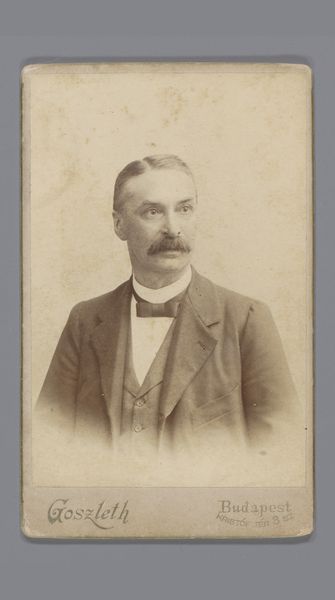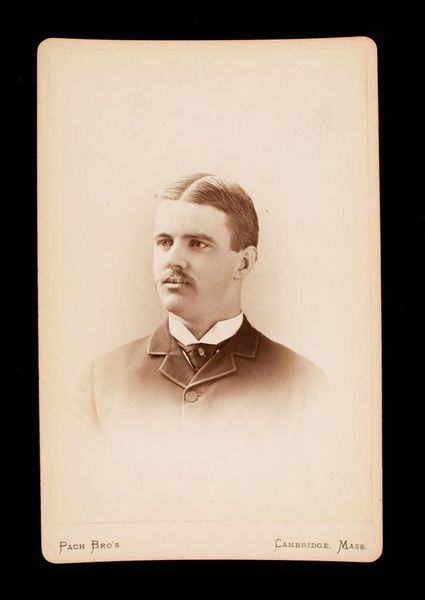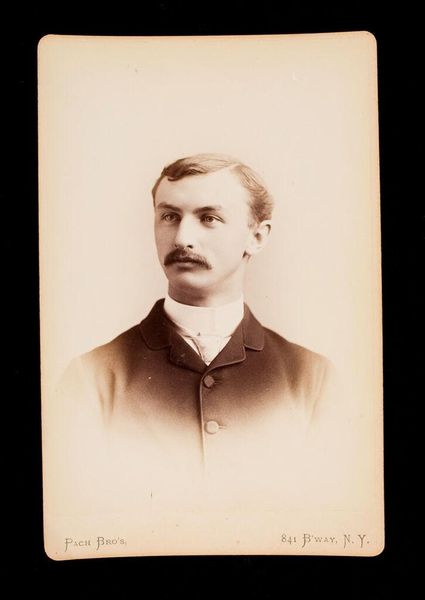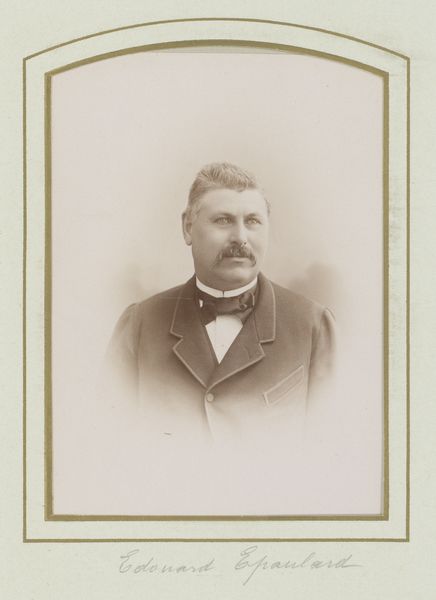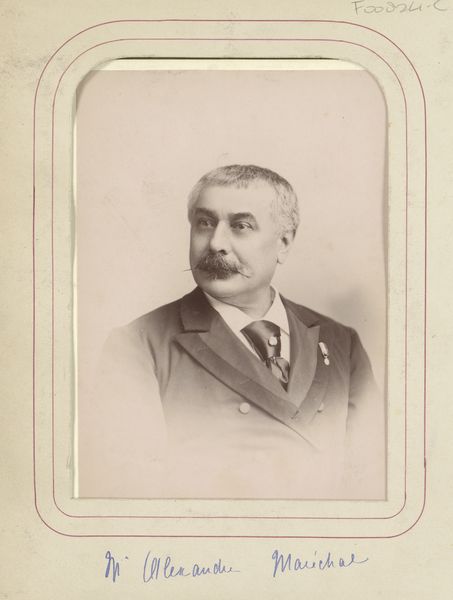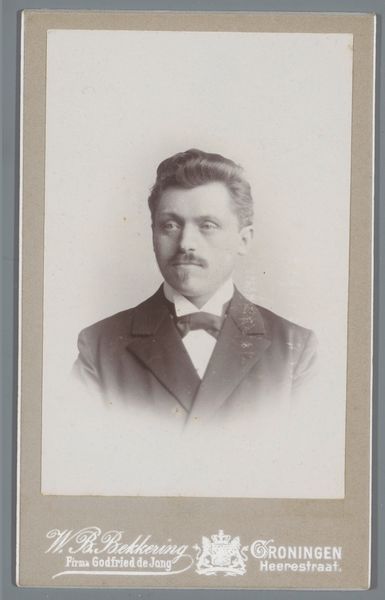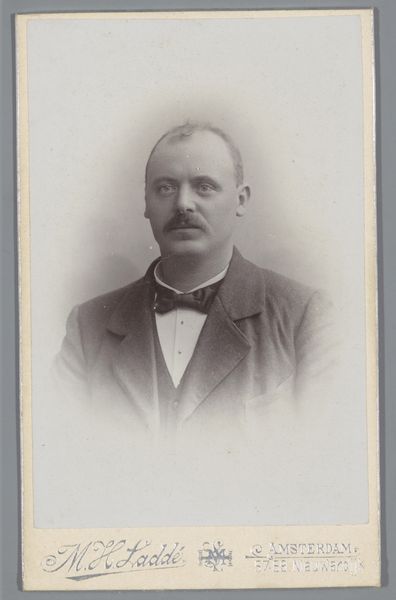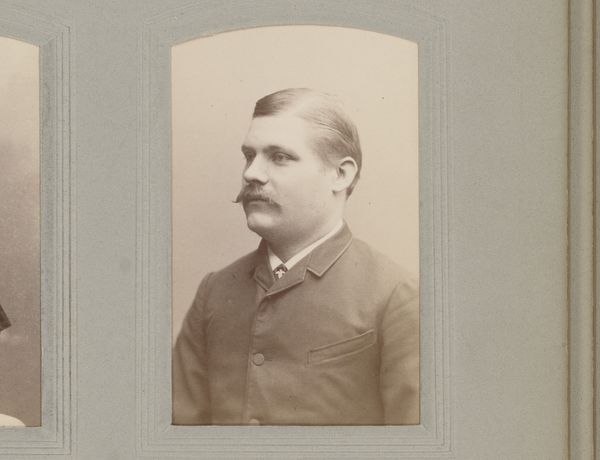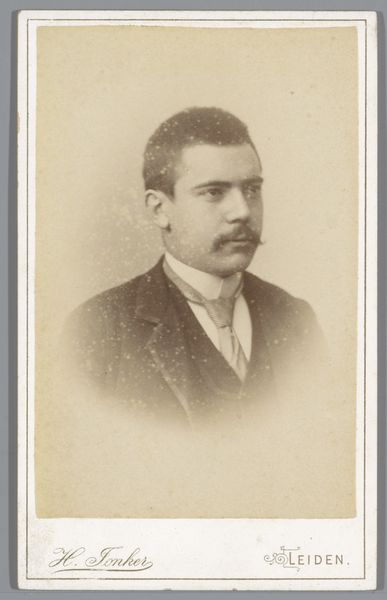
photography, albumen-print
#
portrait
#
photography
#
historical photography
#
19th century
#
albumen-print
#
realism
Dimensions: height 165 mm, width 110 mm
Copyright: Rijks Museum: Open Domain
Editor: Here we have a photograph entitled "Portrait of an Unknown, possibly Meir Wachenheimer," dating between 1870 and 1920, attributed to Anton Hruschka. It's an albumen print. What strikes me most is its subdued, almost monochromatic palette. What visual elements stand out to you? Curator: The most arresting feature, formally speaking, is the subtle gradation of tones across the composition. Note how the figure emerges from the creamy ground, edges softening to suggest form. Consider, too, the cropping. The subject's placement, slightly off-center, generates a dynamic tension. The gaze is averted, further destabilizing the image's symmetrical potential. Editor: So, the asymmetry is deliberate and crucial to its visual impact? Curator: Precisely. The artist manipulates what might have been a static portrait convention into a field of interacting visual forces. Look at the detail, for example, in the rendering of the mustache, then compare it to the soft-focus rendering of the jacket. Why do you think the artist chose this contrast? Editor: Perhaps to emphasize character, drawing attention to the face? Curator: Precisely. Now consider the texture of the print itself, the slight imperfections and the tonal variations. How does this materiality contribute to your understanding? Editor: It lends the image a sense of authenticity, almost a tactile connection to the past. Curator: Indeed. The photograph invites us to see not merely an image of a man but an interplay of surface, light, and form – a carefully constructed composition where even the imperfections become integral to its artistic value. Editor: This close formal analysis gives me a completely different appreciation for what I initially perceived as a simple portrait.
Comments
No comments
Be the first to comment and join the conversation on the ultimate creative platform.
